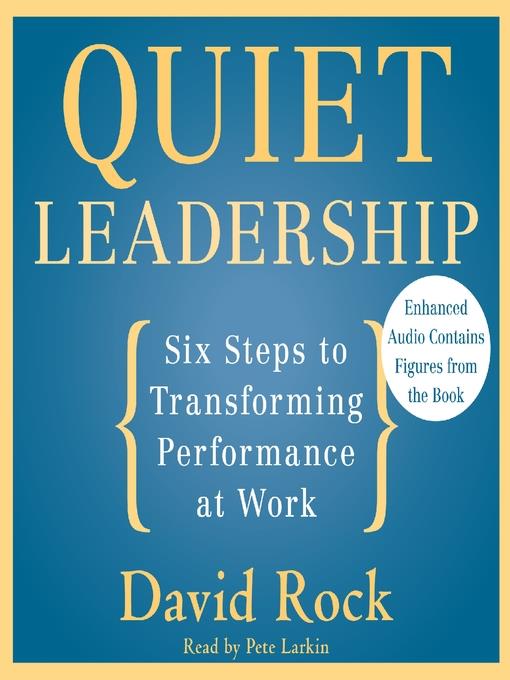
Quiet Leadership
Six Steps to Transforming Performance at Work
کتاب های مرتبط
- اطلاعات
- نقد و بررسی
- دیدگاه کاربران
نقد و بررسی

March 6, 2006
A leader's job "should be to help people make their own connections," Rock asserts—a commonsense message he overcomplicates in this guide for executives and managers who want to improve employee performance. Rock, CEO of Results Coaching System, strives to legitimize his methodology with neuroscience, acronyms and catchphrases and gratuitous, Powerpointesque illustrations. But his writing style conflicts with his advice—keep it succinct and focused. Promising that his approach "saves time
and creates energy,
" he details his six steps: "Think About Thinking" (let people think things through without telling them what to do, while remaining "solutions-focused"); "Listen for Potential" (be a sounding board for employees); "Speak with Intent" (clarify and streamline conversation); "Dance Toward Insight" (communicate in ways that promote other people's insights); "CREATE New Thinking" (which stands for Current Reality, Explore Alternatives and Tap Their Energy, an acronym about "helping people turn their insights into habits"); and, finally, "Follow Up" to ensure ongoing improved performance. Rock also explains how to apply the steps to problem solving, decision making and giving feedback. Perhaps Rock conveys his strategies more effectively in a seminar setting, but for busy executives, this guide (after Personal Best
) is more likely to generate frustration than an " 'aha' moment."

Starred review from April 15, 2006
From the title, this work sounds subdued. But Rock (CEO, Results Coaching Systems; Personal Best) actually grounds his ideas in dynamic discoveries about how the human brain works. Typical management approaches to changing behavior fail to account for the surprising differences in how each person processes information and solves problems. Rock suggests that it's far more effective to build new neural pathways to learn new habits than to deconstruct old ones. Transforming performance involves listening and communicating in more positive and effective ways. The ultimate goal of quiet leadership is to empower employees to think and solve problems for themselves. This highly practical guide includes exercises for each major concept introduced, giving readers a chance to practice what they've learned. A brief bibliography highlights research for further reading. Recommended for public library business collections.
Copyright 2006 Library Journal, LLC Used with permission.

























دیدگاه کاربران